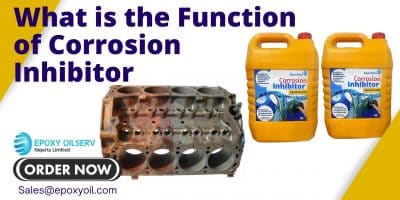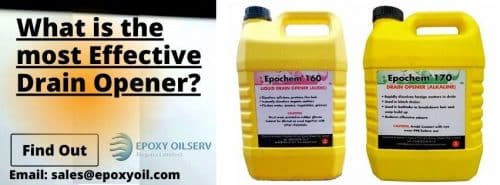Ensuring Safety and Compliance in Industrial Cleaning: Best Practices and Strategies
In the industrial sector, maintaining cleanliness is not just about aesthetics; it is a critical component of safety and compliance. The stakes are high, as lapses in cleaning can lead to hazardous conditions, regulatory fines, and damage to equipment and reputation. This article delves into best practices and strategies for ensuring safety and compliance in industrial cleaning, offering insights and actionable steps to elevate your cleaning protocols.
Key Takeaway
A proactive approach to safety and compliance, supported by ongoing training, proper equipment, and adherence to regulations, is essential for maintaining high standards in industrial cleaning.
Understanding the Importance of Safety and Compliance
Industrial cleaning is subject to stringent safety and compliance standards. Adhering to these standards is essential for protecting workers, maintaining operational efficiency, and avoiding legal repercussions. This section explores why safety and compliance are paramount in industrial cleaning and the risks associated with neglecting these aspects.
Key Reasons for Prioritizing Safety and Compliance
- Protecting Workers’ Health: Industrial environments often involve exposure to hazardous substances. Proper cleaning reduces the risk of accidents and long-term health issues among workers.
- Regulatory Requirements: Various regulations govern industrial cleaning practices, including OSHA standards, EPA regulations, and industry-specific guidelines. Non-compliance can result in significant fines and legal action.
- Operational Efficiency: Clean and well-maintained facilities operate more efficiently. Equipment lasts longer, and the risk of breakdowns and accidents decreases.
- Reputation Management: Companies known for maintaining high safety and compliance standards build trust with clients, employees, and stakeholders.
- Environmental Impact: Proper cleaning practices help minimize the environmental footprint of industrial operations, ensuring sustainable and responsible business practices.
Best Practices for Ensuring Safety in Industrial Cleaning
Ensuring safety in industrial cleaning involves a combination of proper training, appropriate equipment, and adherence to protocols. This section outlines the best practices that contribute to a safe cleaning environment.
1. Comprehensive Training Programs
Effective training is the cornerstone of safety in industrial cleaning. Employees must be well-versed in the latest safety protocols, equipment usage, and emergency procedures.
Key Elements of a Comprehensive Training Program:
- Hazard Communication: Educate workers about the hazards they might encounter and the precautions they need to take.
- Proper Equipment Use: Training on the correct use of cleaning equipment to prevent accidents and ensure effective cleaning.
- Emergency Procedures: Clear instructions on what to do in case of spills, exposure to hazardous substances, or other emergencies.
- Regular Refresher Courses: Ongoing training to keep employees updated on new regulations and best practices.
2. Use of Personal Protective Equipment (PPE)
PPE is crucial for protecting workers from exposure to harmful substances and physical injuries.
Essential PPE for Industrial Cleaning:
- Gloves: Protect hands from chemicals and contaminants.
- Respirators: Prevent inhalation of hazardous fumes and dust.
- Protective Clothing: Shields skin from chemicals and physical hazards.
- Safety Goggles: Protect eyes from splashes and debris.
- Safety Boots: Prevent injuries from slips, trips, and falling objects.
3. Regular Equipment Maintenance
Cleaning equipment must be maintained regularly to ensure it operates safely and efficiently.
Steps for Regular Equipment Maintenance:
- Inspection: Regularly inspect equipment for signs of wear and tear.
- Cleaning: Clean equipment after each use to prevent build-up and ensure hygiene.
- Repairs: Promptly repair or replace faulty equipment to avoid accidents.
- Documentation: Keep detailed records of maintenance activities for compliance and future reference.
4. Safe Chemical Handling
Many industrial cleaning tasks involve the use of potent chemicals. Proper handling and storage are essential to prevent accidents and health risks.
Safe Chemical Handling Practices:
- Labeling: Ensure all chemicals are clearly labeled with their contents and hazard information.
- Storage: Store chemicals in a well-ventilated area, away from incompatible substances.
- Usage Instructions: Follow the manufacturer’s instructions for safe usage and disposal.
- Spill Response: Have a spill response plan in place and ensure all employees are trained to handle spills safely.
5. Implementing Safety Protocols
Standardized safety protocols ensure consistency and thoroughness in cleaning practices.
Examples of Essential Safety Protocols:
- Lockout/Tagout Procedures: Ensure machines are properly shut down and tagged to prevent accidental start-up during cleaning.
- Ventilation: Use proper ventilation methods to disperse harmful fumes and maintain air quality.
- Incident Reporting: Encourage employees to report any safety incidents or near-misses promptly.
Strategies for Ensuring Compliance in Industrial Cleaning
Compliance with industry standards and regulations is non-negotiable in industrial cleaning. This section covers strategies to ensure that your cleaning practices meet all necessary regulatory requirements.
1. Staying Updated with Regulations
The regulatory landscape is constantly evolving. Keeping abreast of changes is crucial for maintaining compliance.
Ways to Stay Updated:
- Subscriptions: Subscribe to industry newsletters and regulatory updates.
- Professional Associations: Join relevant professional associations that provide updates and resources.
- Training Programs: Enroll in training programs that cover the latest regulatory changes.
2. Conducting Regular Audits
Regular audits help identify areas of non-compliance and provide opportunities for corrective action.
Steps for Effective Audits:
- Internal Audits: Conduct internal audits regularly to assess compliance with internal policies and external regulations.
- Third-Party Audits: Engage third-party auditors for an unbiased assessment.
- Action Plans: Develop and implement action plans to address any issues identified during audits.
3. Documentation and Record-Keeping
Maintaining detailed records is essential for demonstrating compliance and for future reference.
Important Records to Keep:
- Training Records: Document all training activities and employee certifications.
- Maintenance Logs: Keep logs of all equipment maintenance and repairs.
- Chemical Inventory: Maintain an up-to-date inventory of all chemicals used, including safety data sheets (SDS).
- Incident Reports: Record all safety incidents, near-misses, and the corrective actions taken.
4. Engaging with Regulatory Bodies
Building a positive relationship with regulatory bodies can be beneficial for staying compliant.
Ways to Engage:
- Consultations: Seek advice and clarification on regulatory requirements.
- Feedback: Provide feedback on proposed regulations and share industry insights.
- Compliance Assistance Programs: Participate in programs offered by regulatory bodies that provide guidance on compliance.
5. Continuous Improvement
Compliance is not a one-time task but an ongoing process. Strive for continuous improvement in your cleaning practices.
Approaches to Continuous Improvement:
- Feedback Loops: Create mechanisms for employees to provide feedback on safety and compliance issues.
- Performance Metrics: Develop and track performance metrics related to safety and compliance.
- Innovation: Stay open to adopting new technologies and methods that enhance safety and compliance.
FAQs
- What are the key components of a comprehensive training program for industrial cleaning?
- Hazard communication, proper equipment use, emergency procedures, and regular refresher courses.
- Why is PPE important in industrial cleaning, and what are some essential items?
- PPE protects workers from exposure to harmful substances and physical injuries. Essential items include gloves, respirators, protective clothing, safety goggles, and safety boots.
- How can regular equipment maintenance contribute to safety in industrial cleaning?
- Regular maintenance ensures equipment operates safely and efficiently, preventing accidents and breakdowns.
- What are some best practices for safe chemical handling in industrial cleaning?
- Proper labeling, safe storage, following usage instructions, and having a spill response plan.
- How can businesses ensure continuous compliance with industrial cleaning regulations?
- Staying updated with regulations, conducting regular audits, maintaining detailed records, engaging with regulatory bodies, and striving for continuous improvement.
Ensuring safety and compliance in industrial cleaning is essential for the health and well-being of workers, the efficiency of operations, and the reputation of the company. By implementing comprehensive training programs, using appropriate PPE, maintaining equipment, handling chemicals safely, and adhering to standardized protocols, businesses can create a safer work environment. Additionally, staying updated with regulations, conducting regular audits, maintaining thorough documentation, engaging with regulatory bodies, and striving for continuous improvement are key strategies for maintaining compliance. For more information or to request our services, visit epoxyoil.com or email us at sales@epoxyoil.com. Our team at Epoxy Oilserv Limited is dedicated to helping you maintain the highest standards of safety and compliance in your industrial cleaning operations. Contact us today to learn more about our comprehensive solutions and how we can support your business needs.



